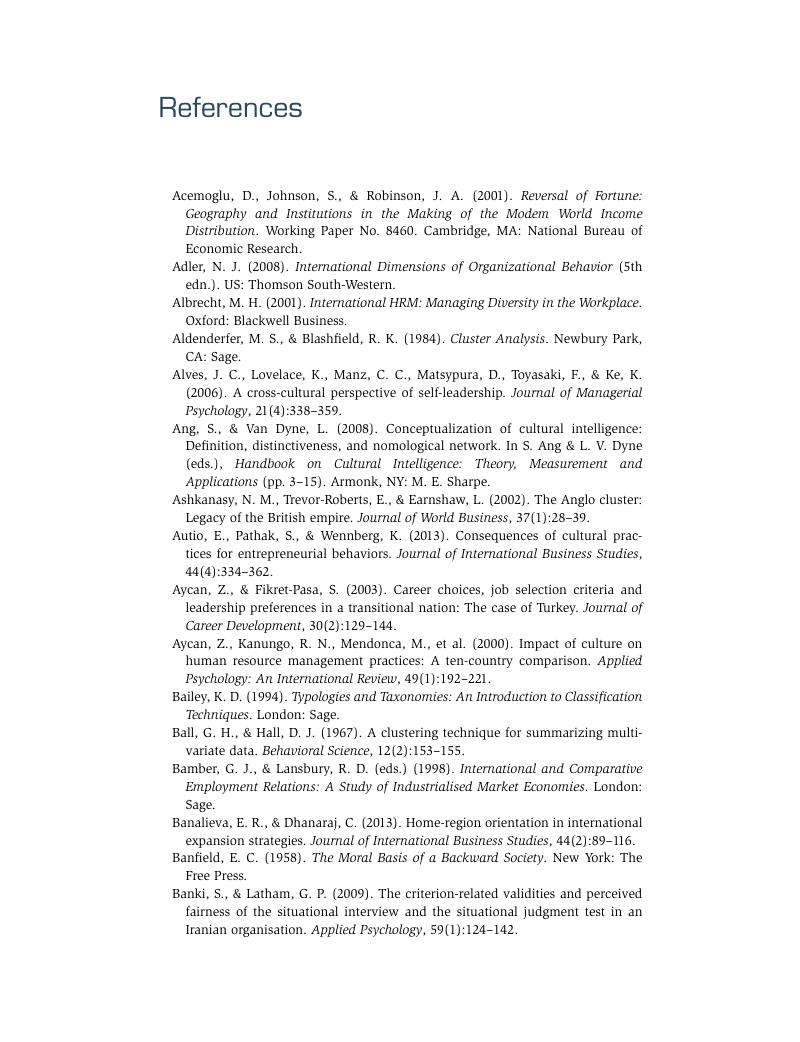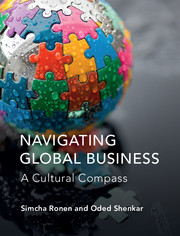Book contents
- Navigating Global Business
- Navigating Global Business
- Copyright page
- Dedication
- Contents
- Tables
- Figures
- Foreword
- Acknowledgments
- Acronyms
- Introduction
- 1 Delineating Culture
- 2 Generating the Clustering Map
- 3 Eco-cultural and Economic Correlates
- 4 Attitudinal and Behavioral Dimensions
- 5 A Cluster by Cluster Review
- Bibliography
- Index
- References
Bibliography
Published online by Cambridge University Press: 05 September 2017
- Navigating Global Business
- Navigating Global Business
- Copyright page
- Dedication
- Contents
- Tables
- Figures
- Foreword
- Acknowledgments
- Acronyms
- Introduction
- 1 Delineating Culture
- 2 Generating the Clustering Map
- 3 Eco-cultural and Economic Correlates
- 4 Attitudinal and Behavioral Dimensions
- 5 A Cluster by Cluster Review
- Bibliography
- Index
- References
Summary

- Type
- Chapter
- Information
- Navigating Global BusinessA Cultural Compass, pp. 336 - 362Publisher: Cambridge University PressPrint publication year: 2017



